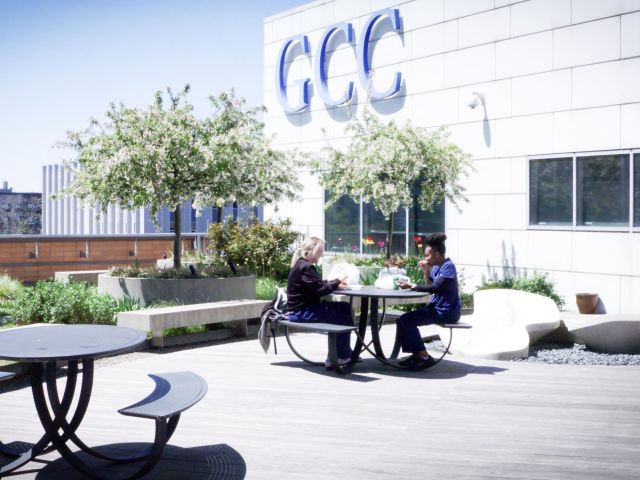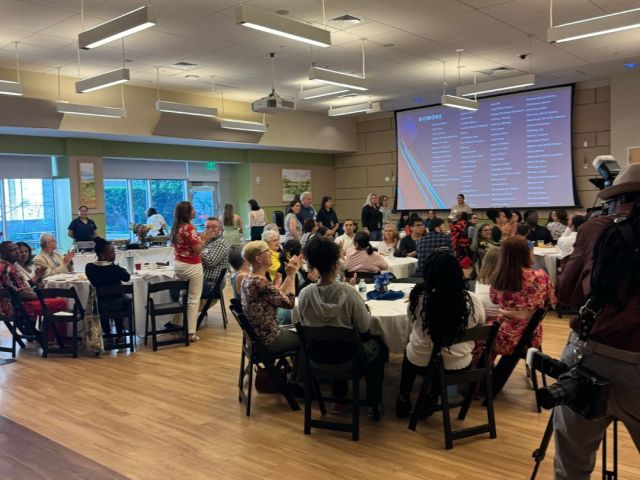News Center
Bringing you the latest news and events from Gateway Community College.
TREMBLAY'S NEW PHYSICS BOOK AIMS TO MAKE SUBJECT 'ACCESSIBLE'
Share

R .E. Tremblay chairs the mathematics and science department at GCC, where he has taught for three decades. A holder of B.S., M.S. and sixth-year degrees from Southern Connecticut State University (where he also taught, from 1978 to 2014), Tremblay is the co-author of the textbook Physics with Health Science Applications, the second edition of which (ISBN 1524932418) was published by Kendall Hunt on August 18.
Gateway science professor R.E. (Rocky) Tremblay lives by a simple motto: “The Universe is knowable.” To prove it, he’s written a new physics textbook.
By accident.
Unlike, say, taking out the trash or trimming the shrubbery surrounding the Woodbridge alpaca farm he shares with his wife, Cathy, one imagines researching, writing and editing a 512-page science textbook, Physics with Health Science Applications (2nd Ed., Kendall Hunt, 2017), to be an undertaking not quite for the faint of heart. But the project, which spanned more than ten years, didn’t start out that way.
When Tremblay began teaching PHY 111, Physics for the Life Sciences, at Gateway in 1987 he chose Physics with Health Science Applications as principal text for the class. Then in its first edition (published in 1985 by Wiley) by Sacramento (Calif.) State University physics and astronomy professor Paul Peter Urone, the volume was at the time a standard text for teaching algebra-based physics to applied-health and nursing students.
“It was a great book,” Tremblay recounts, “but I quickly realized that my students couldn’t read the book with any degree of understanding. They were relying [instead] on what I presented in the classroom. So I started rewriting parts of the book to expand on [Urone’s] examples. Instead of an example having one or two steps, maybe it would have five or six steps. I also added conceptual pieces to the book and created my own website [to supplement the text for students]. All I was trying to do was to make these topics more accessible to my students.
“So over the years, on my own little island, I ended up with a pretty comprehensive second edition without that even being my purpose,“ Tremblay explains. “Serendipity, right?” That’s how this August, with a new publisher (Kendall Hunt) and the imprimatur of its original author, a second edition of Physics with Health Science Applications (with Urone credited as co-author) became a reality. “This,” Tremblay enthuses, “is so cool.”
(Tremblay is donating his share of royalties from sales of the book to GCC students to the college’s General Fund.)
* * *
If Rocky Tremblay brings a childlike wonder and enthusiasm to learning and teaching science, that’s because his fascination with the physical world around him (Why is the sky blue? What makes a rainbow?) began long ago when he was a boy growing up in the Maine woods.
“I was always doing physics,” he remembers, “but I didn’t know it was physics. When I was five I had a bow and arrow. I would shoot arrows into the air and try to make them land close to me,” providing an object lesson in wind vectors. Later, taking aim with his bow and arrow at fish just beneath the water’s surface, “I was shooting at the fish and missing, and I couldn’t understand why I kept missing.” The answer (refraction — voilà!) kindled a spark that would ignite the passion of a lifetime.
Not long after, when his family relocated to Connecticut, Tremblay drew indelible inspiration from his physics teacher at West Haven High School, Dr. John Karajanis. “My classmates and I loved every minute we spent in his sanctuary of learning,” Tremblay wrote of Dr. K (as his students called him) in a tribute posted on his personal website, www.retremblay.net . He recalls a small sign on the side of the blackboard in Karajanis’ classroom. It read:
The aim of a great teacher is to inspire leaders, not followers. The mark of a great teacher is for his students to surpass him.
Today, across the decades, Tremblay continues to live and work guided by that soupçon of stardust imparted to him by his mentor in a West Haven classroom long ago. “Best teacher I ever had,” one student called Tremblay. Another proclaimed the self-effacing science guru “a teaching genius!” “My goal,” Tremblay explains simply, “is to have a class where the students all try hard, and they all get an A.”
Tremblay describes himself as a “physics evangelist. Remember the Blues Brothers?” he asks of the eponymous 1980 movie whose protagonists, Jake and Elwood Blues, were on a “mission from God.”
“I’m kind of on a mission myself,” Tremblay allows. “To spread the gospel of physics. This textbook allows me to spread that gospel.”
Dr. K would be proud.






